Lily Garden Ideas: Brighten Your Yard with Blooms
Lily gardens can bring a stunning array of colors and fragrances to your outdoor space. With their elegant petals and diverse varieties, lilies are a joy to design with, offering countless creative possibilities. Are you ready to explore some delightful lily garden ideas that can transform your garden into a beautiful oasis?
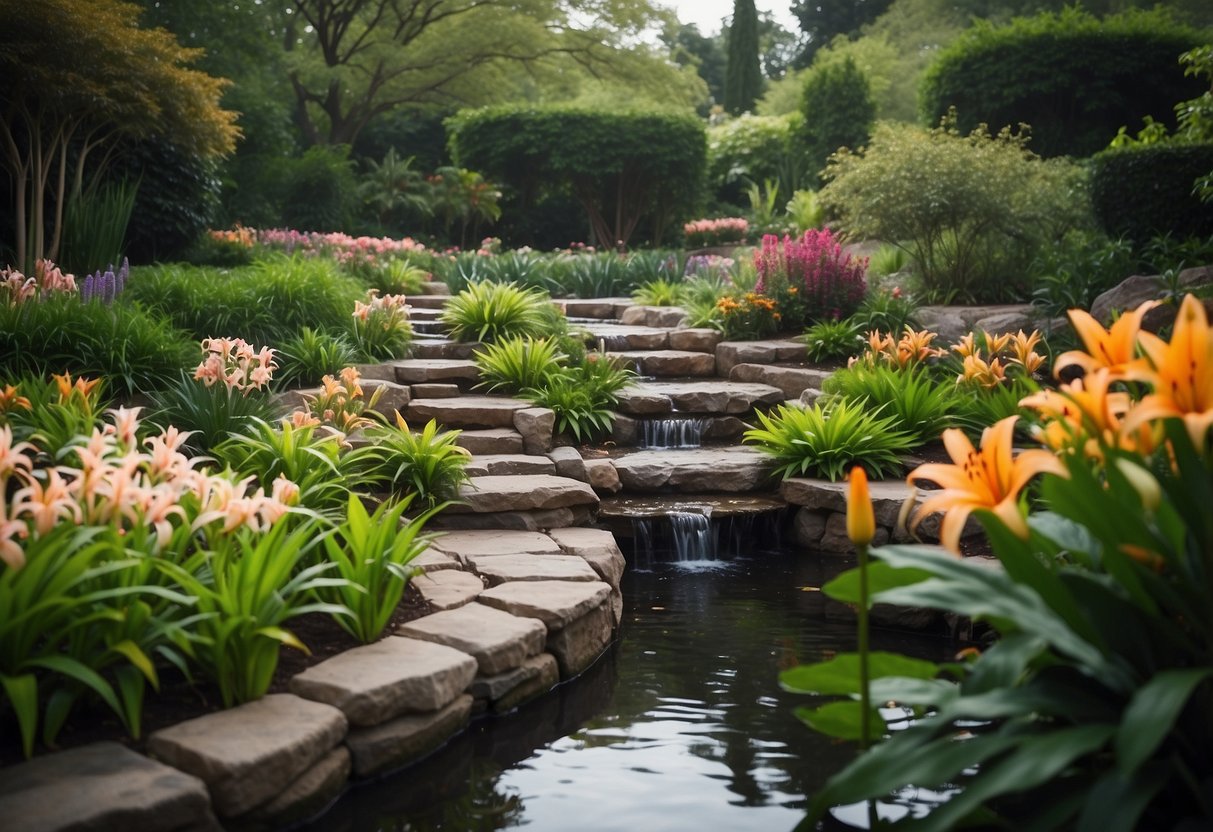
By combining different types of lilies and complementary plants, you can create a landscape that not only looks amazing but also thrives throughout the seasons. You’ll find tips on plant combinations and layout suggestions that cater to both beginner and experienced gardeners.
1) Tranquil Water Lily Pond

Imagine stepping into your backyard and being greeted by a peaceful water lily pond. The gentle ripples and colorful blooms instantly create a calming atmosphere.
To start, choose a location with plenty of sunlight. Water lilies need about six hours of direct sunlight each day.
Use small pebbles or gravel to cover the soil in your lily containers. This helps keep the soil in place. Gradually lower the containers into the water to prevent disturbance.
For a deeper pond, you can use bricks or an upturned pot to adjust the height. Consider adding different colored water lilies to make the pond vibrant and lively. Adding a charming stepping stone path can enhance the magical experience. Enjoy watching frogs and other wildlife play in your tranquil pond, bringing a touch of nature to your garden.
2) Lily Varieties Mix

Mixing different lily varieties in your garden can create a vibrant and dynamic display. You can combine Asiatic lilies with Oriental lilies to enjoy a range of colors and bloom times.
Asiatic lilies bloom early in the summer and come in many colors. Oriental lilies bloom later and have strong fragrances. This combination ensures your garden stays colorful for a longer period.
3) Lily Garden Pathway
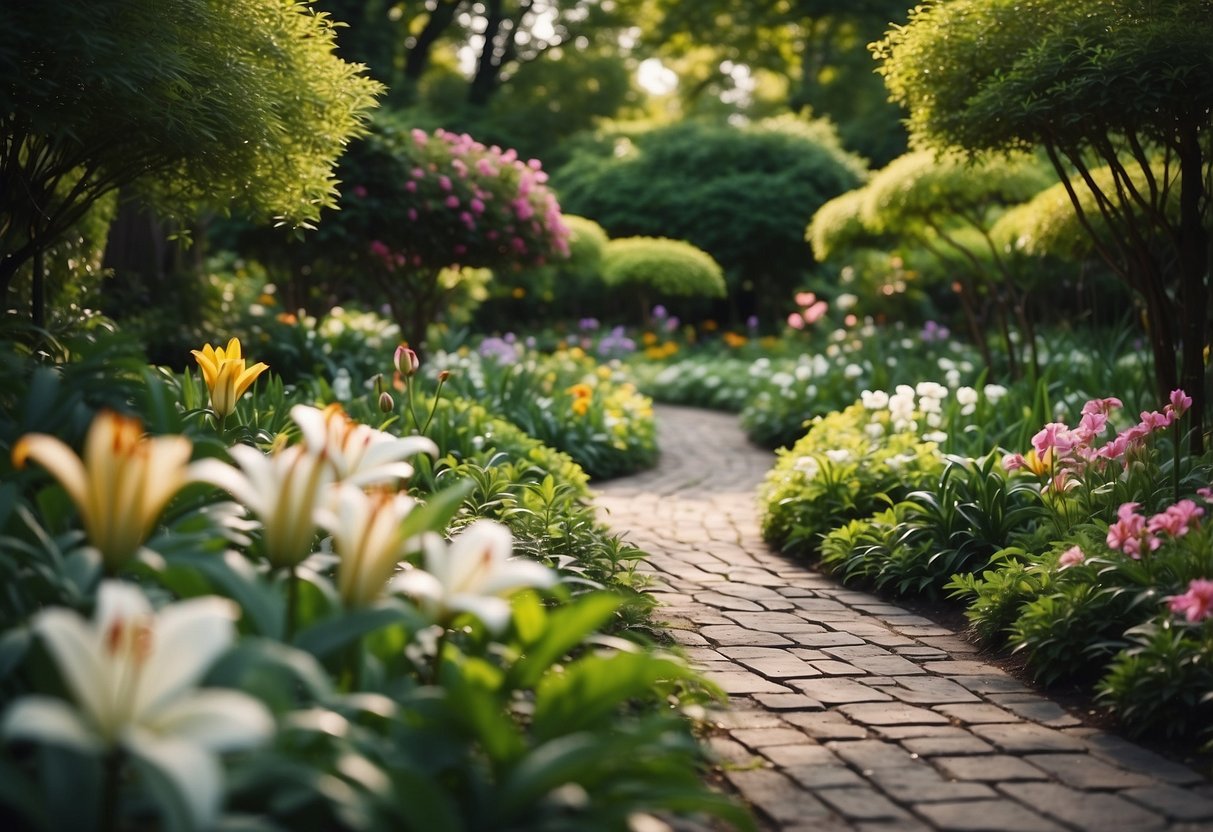
Create a stunning lily garden pathway by lining the borders with various types of lilies. Choose Asiatic lilies for their bright, upward-facing blooms.
Space the lilies about 12 to 18 inches apart for good air circulation and to prevent overcrowding. This way, you ensure each plant gets enough room to grow, making your pathway look lush and vibrant.
For a delightful scent, add some Trumpet lilies. Their sweet fragrance will enhance your garden experience as you walk through.
4) Shaded Lily Nook

Creating a shaded lily nook in your garden can provide a peaceful retreat.
Choose lilies like toadlily or Turk’s cap lily, which thrive in lower light.
Pair these with hostas or ferns to add lush greenery.
Consider adding a comfortable bench or chair to relax and enjoy the serene space.
With a bit of planning, your shaded lily nook will become a favorite garden spot.
5) White Lily Cluster
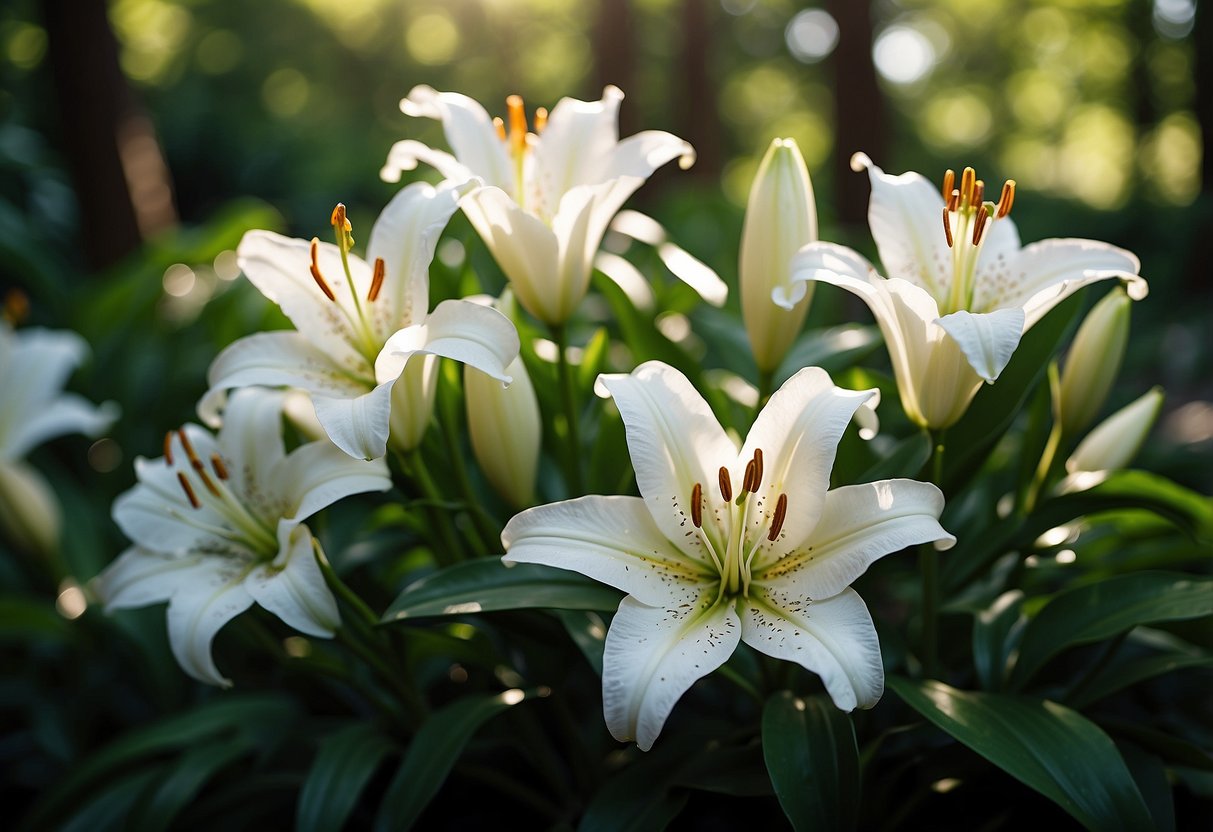
White lilies create a serene and elegant look in any garden. They stand out with their large, pure white blooms.
Planting white lilies in clusters can make a striking visual impact. The clusters look even better when paired with greenery or other colorful flowers.
Consider planting them near your garden’s entrance for an inviting sight.
6) Colorful Lily Borders

Creating colorful lily borders can brighten your garden and provide lasting beauty. Asiatic lilies, with their upward-facing flowers, burst with vibrant colors in early summer. Pair them with low-growing perennials for a layered landscape effect.
Daylilies are another great option. They can produce up to 400 blooms in a season, adding stunning accents to your borders.
Mix and match different lily species to find the perfect combination for your garden. Planting lilies of varying heights and colors will give your garden a dynamic and eye-catching look.
7) Circular Lily Bed
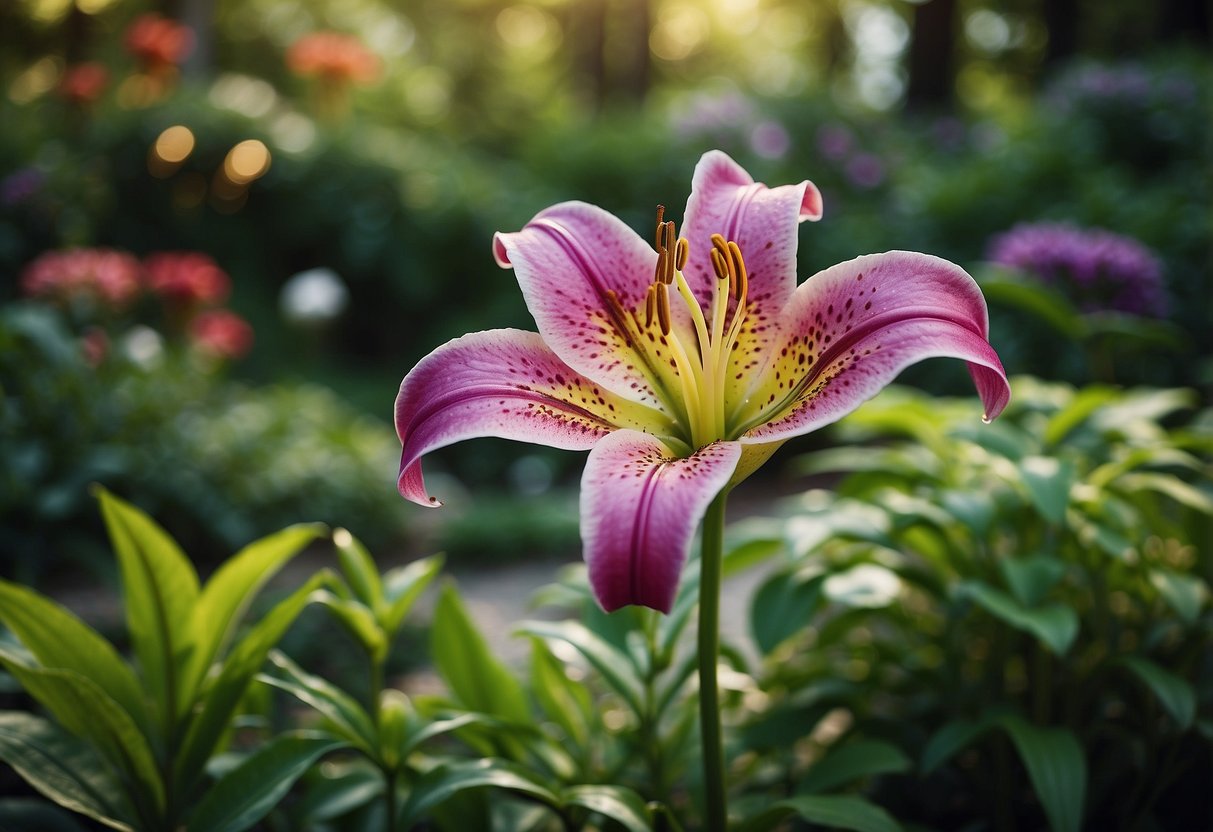
Creating a circular lily bed can add a unique and eye-catching feature to your garden. Start by choosing a sunny spot as lilies thrive in sunlight.
Next, decide on the center focal point. A small sculpture or birdbath can look great. Surround it with your favorite lily varieties.
Ensure you leave enough space between plants for growth and easy maintenance. Mulch the bed to retain moisture and keep weeds down.
For a burst of color, mix different types of lilies like oriental, Asiatic, and trumpet lilies. This will create a vibrant, dynamic display.
8) Lily and Fern Combo
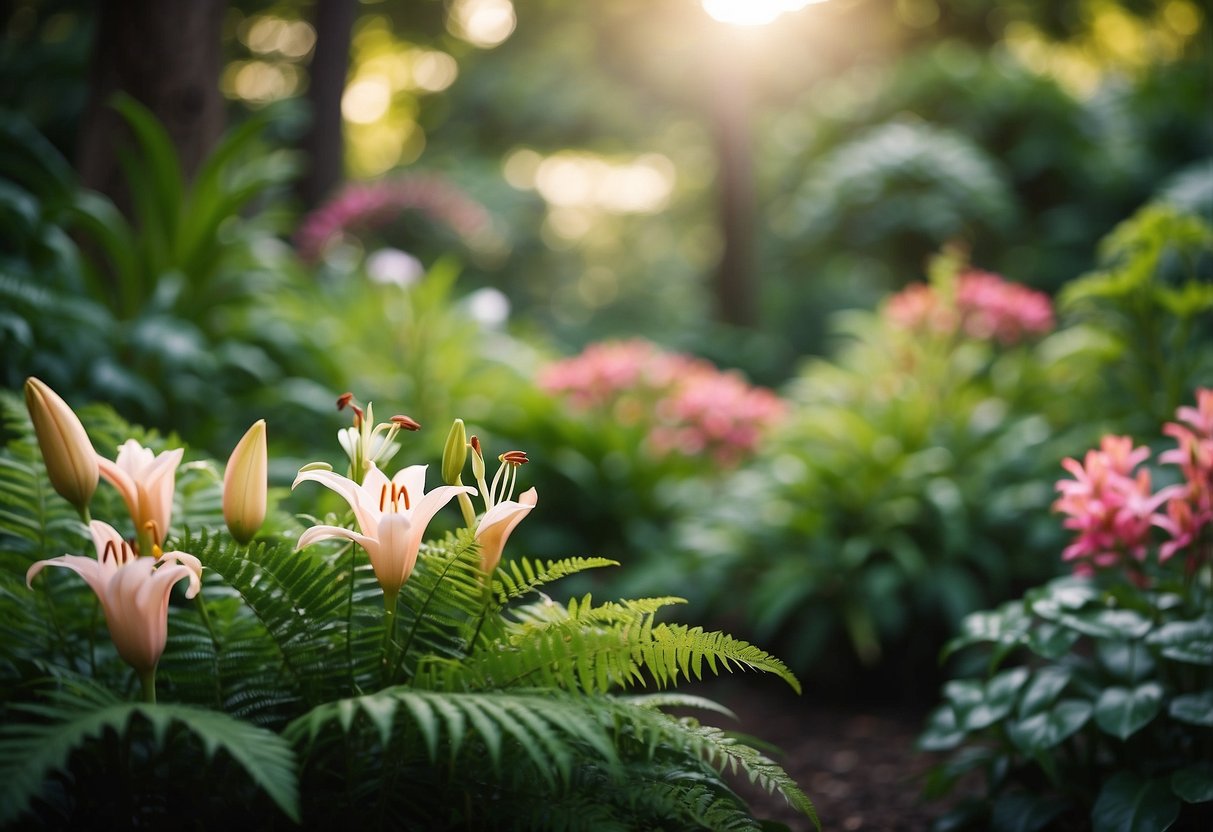
Pairing lilies with ferns creates a stunning garden display. The bright colors of lilies, like orange and yellow, pop against the lush, green ferns.
Ferns, such as the soft field fern, provide texture and depth, making your garden feel more vibrant and full.
For a tranquil appearance, try the Hart’s Tongue Fern with white lilies. This combination works well in shaded areas too!
9) Perennial Lily Patch

Creating a perennial lily patch can bring vibrant color to your garden year after year. Asiatic lilies are a great choice as they bloom in late spring and early summer. They thrive in plant hardiness zones 4 to 9.
Pair your lilies with low-growing perennials. This layering effect adds depth to your garden and keeps the lily roots shaded while their flowers bask in the sun.
Mix a variety of lilies to enhance visual interest. Different colors and textures will create an eye-catching centerpiece. For ideas, check out some stunning designs to inspire your own garden.
10) Fragrant Lily Walkway

Transform your walkway into a fragrant paradise by planting lilies along the path.
Consider using trumpet lilies, which are known for their sweet scent and beautiful, waxy flowers. These lilies bloom in midsummer and can thrive in regions between plant hardiness zones 4 and 9.
Another great choice is the Madonna Lily. It offers pure white, trumpet-like flowers that add a touch of elegance and have an intense fragrance.
By planting these lilies, your walkway will not only look stunning but also smell amazing.
Enhance the experience with other fragrant plants, like jasmine and honeysuckle, to create a truly aromatic path.
Planning Your Lily Garden

Starting a lily garden means picking the right lily types, ensuring they get the best planting conditions, and considering the right seasons for planting.
Choosing the Right Lily Varieties
When choosing lilies, think about the colors and bloom times you like. Asiatic lilies are known for their bright colors and early bloom, while Oriental lilies offer a strong fragrance and bloom later in the season. Different types of lilies can provide a variety of looks and scents to your garden.
Mixing varieties like Asiatic, Oriental, and Trumpet lilies can create a garden that blooms from early summer to late fall. Don’t forget about Daylilies, which are hardy and can thrive in many conditions. Combine these for continuous flowers throughout the season.
Optimal Planting Conditions
Lilies need well-drained soil to thrive. If your garden has heavy clay soil, consider adding compost or sand to improve drainage. Plant lily bulbs about 8 to 10 inches deep to protect them from frost and support tall stems, as advised by Yardious. Space them 12 to 18 inches apart to ensure they have room to grow.
Adequate sunlight is crucial for lilies. Aim for a spot that gets at least 6 hours of full sun daily. If your garden doesn’t receive enough light, the lilies may grow tall and leggy rather than strong and upright.
Seasonal Considerations
Plant lilies in the spring for summer blooms. Start when the soil is workable and there’s no more frost. Spring planting ensures the bulbs establish roots before the growing season gets into full swing. For warmer regions, planting in the fall can also be successful.
Choose lilies capable of withstanding your region’s climate. Some lilies, like the Asiatic or Trumpet lilies, can survive cold winters, while others like the Oriental lilies might need mulching to protect them from extreme cold. Different plant zones will have varying requirements, so be sure to pick varieties that suit your local climate.
Caring for Your Lily Garden

Taking care of your lily garden ensures healthy, beautiful blooms. Focus on proper watering, fertilizing, managing pests and diseases, and pruning for the best results.
Watering and Fertilizing
Lilies need consistent moisture, especially during dry spells. Water them deeply once a week, ensuring the soil is moist but not waterlogged. For consistent moisture, consider mulching with organic material.
Fertilize lilies in early spring as new growth starts. Use a slow-release fertilizer to provide nutrients over time. A balanced 10-10-10 formula works well. Avoid high nitrogen fertilizers as they can promote leafy growth instead of flowers.
During the growing season, you might also use a diluted liquid fertilizer monthly. This gives an additional nutrient boost when lilies are actively growing.
Pest and Disease Management
Lilies can face issues with pests like aphids, lily beetles, and slugs. Inspect your plants regularly. Handpick pests when you see them and consider using insecticidal soap for aphids.
For lily beetles, you might need neem oil or a specific pesticide. Slug traps or barriers can help reduce slug damage.
Diseases like botrytis (gray mold) can affect lilies. To prevent this, ensure good air circulation by spacing plants properly and avoiding overhead watering. Remove and dispose of affected plant parts immediately.
Consider using a mild fungicide for repeated problems. Always follow the instructions on the product label.
Pruning and Deadheading
Pruning and deadheading lilies encourage better blooms and a tidier garden. After lilies flower, cut off the spent blooms. This prevents the plant from putting energy into seed production.
Let the foliage die back naturally as it provides energy for next year’s growth. Only cut the stems back to the ground after they have turned brown and died back completely.
For taller lilies, stake them to provide support and prevent them from bending or breaking. Use soft ties to avoid damaging the stems. Regularly check the stakes and ties, adjusting them as needed to provide adequate support.







